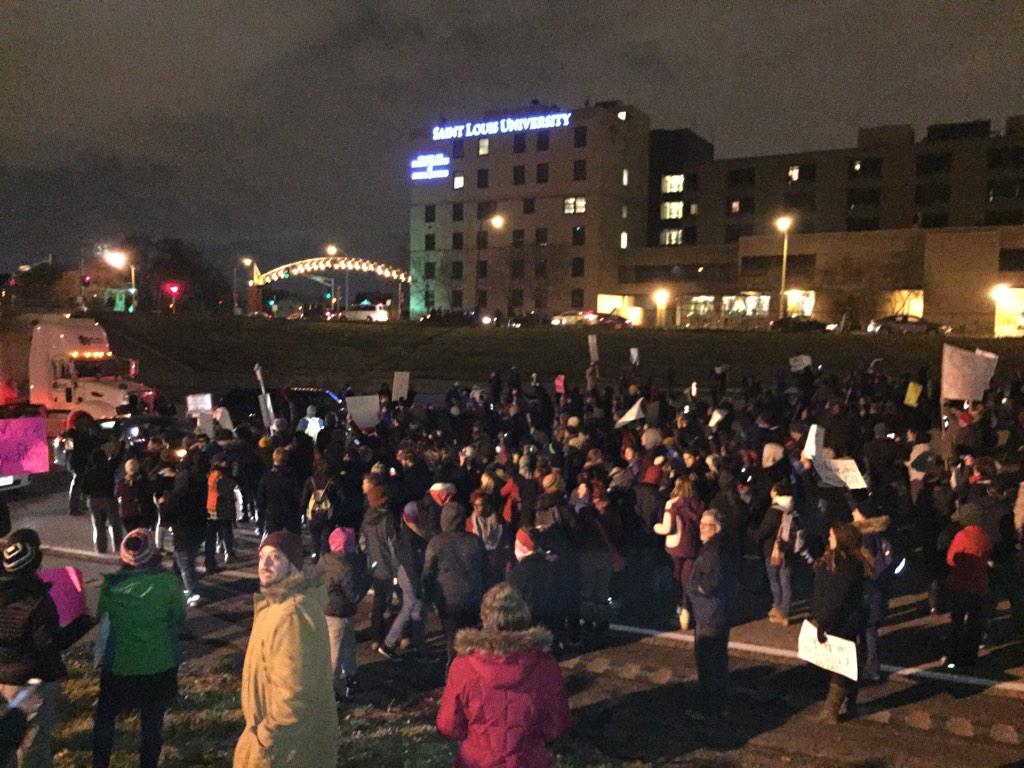What you might have missed last night while watching a village burn or after you had gone to bed, was the spontaneous, largely peaceful protests that boiled over and through cities around the country and up onto the highways.
In some cases the demonstrations were routed there by police barricades of certain streets thinking there was no way they’d march on up to a freeway. Others seemed inspired by the peaceful Shaw protest, several miles from Ferguson, where demonstrators took their lives into their hands (and those of drivers) marched out onto I-44 and sat down, blocking incoming traffic. As far as I know that was the first one. Then there were more. Then I woke up at my customary insomniac hour and checked the news.
The 10 and 110 in LAs were blocked. I-5 in Seattle too. The 580 in Oakland. On-ramps to 676 and 95 in Philadelphia were blockaded, but police were able to prevent the march up onto the elevated freeways (or down in 676’s case). Apparently there were highways blockaded in San Francisco and Chicago as well, but I haven’t found pictures.
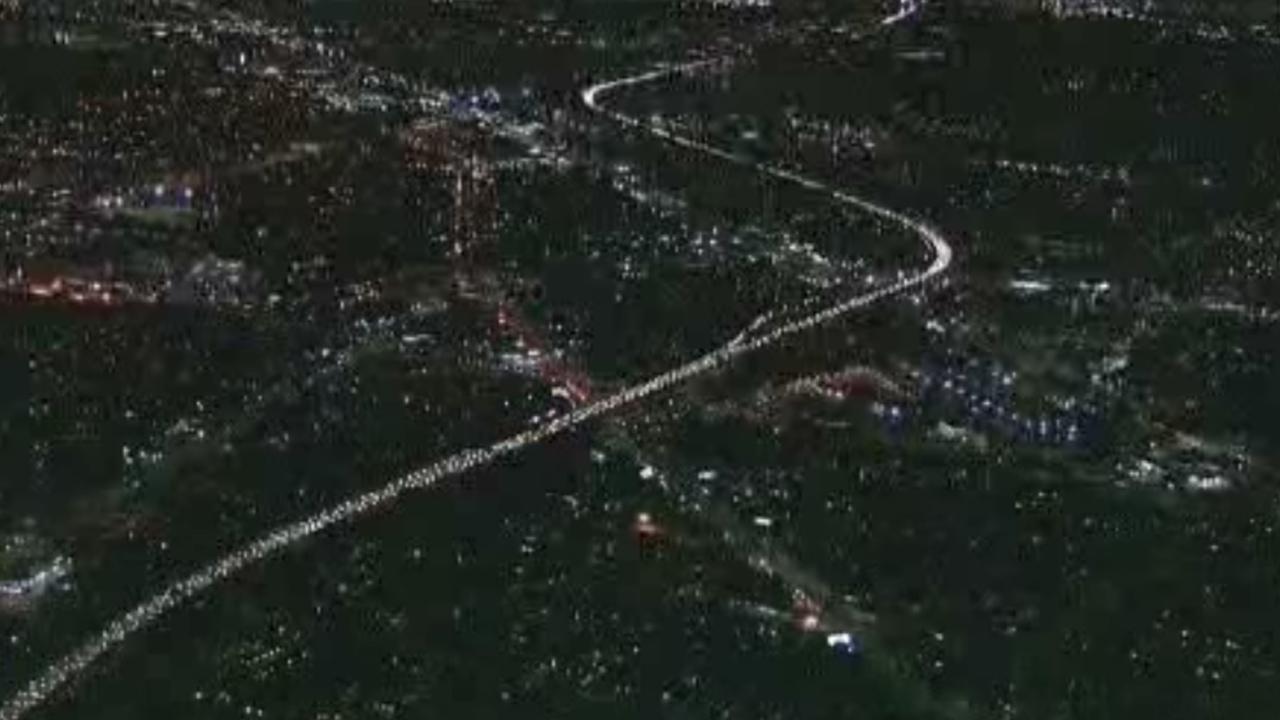

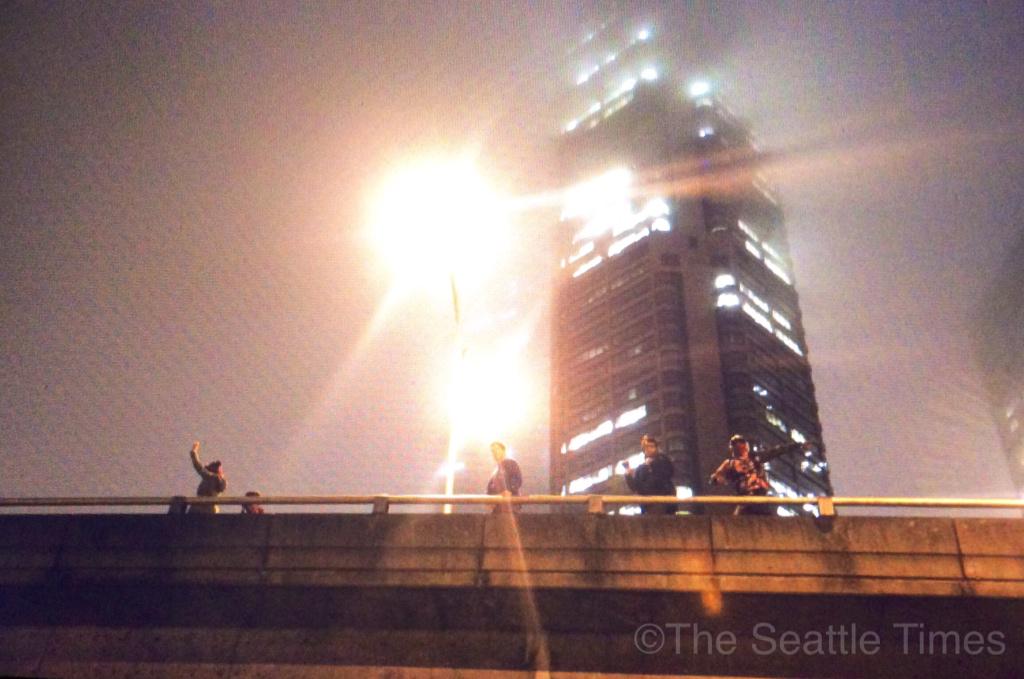
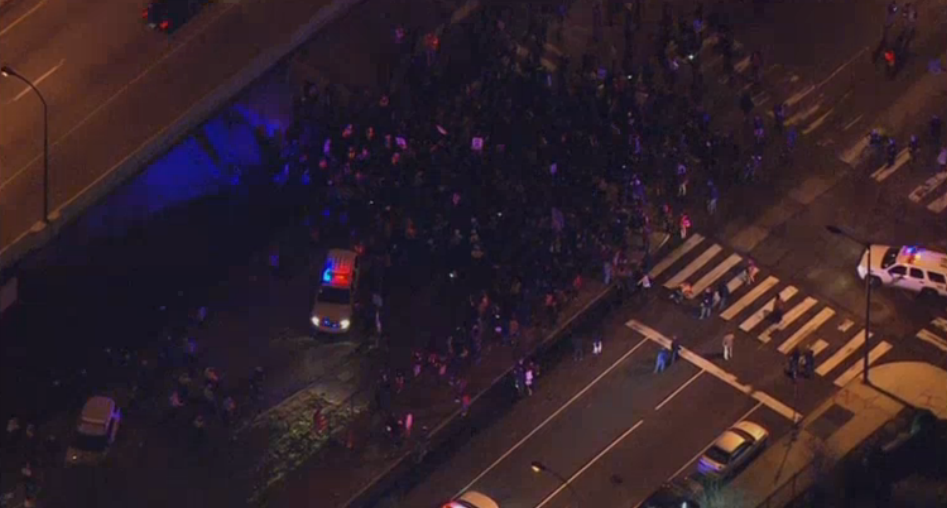
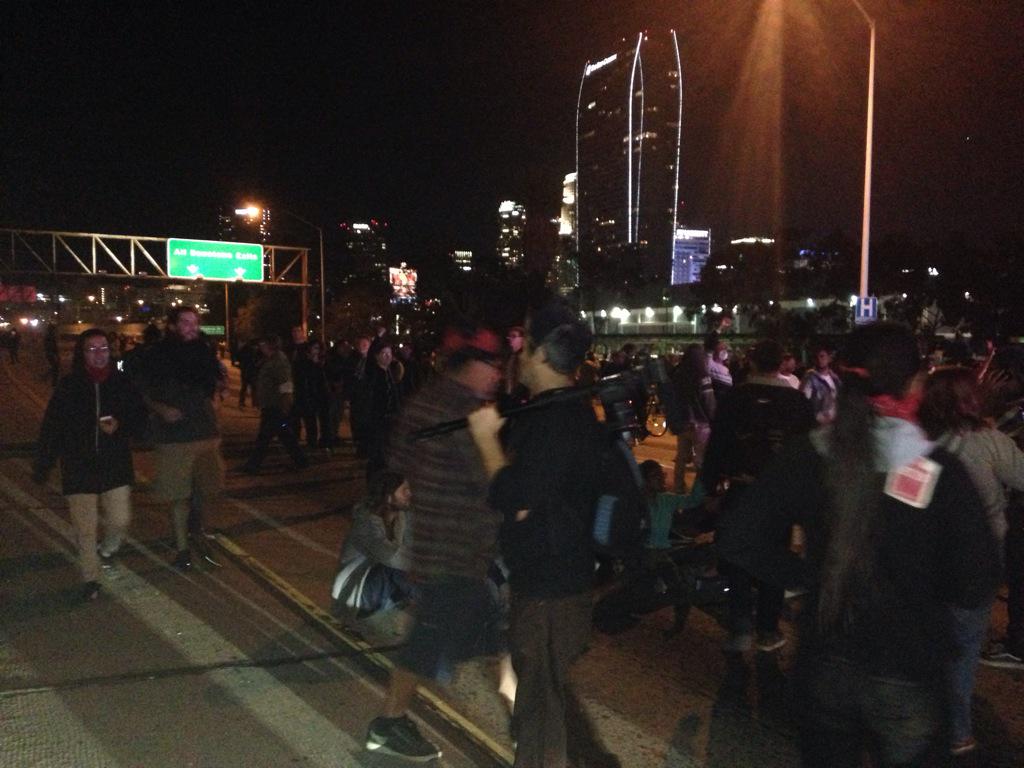
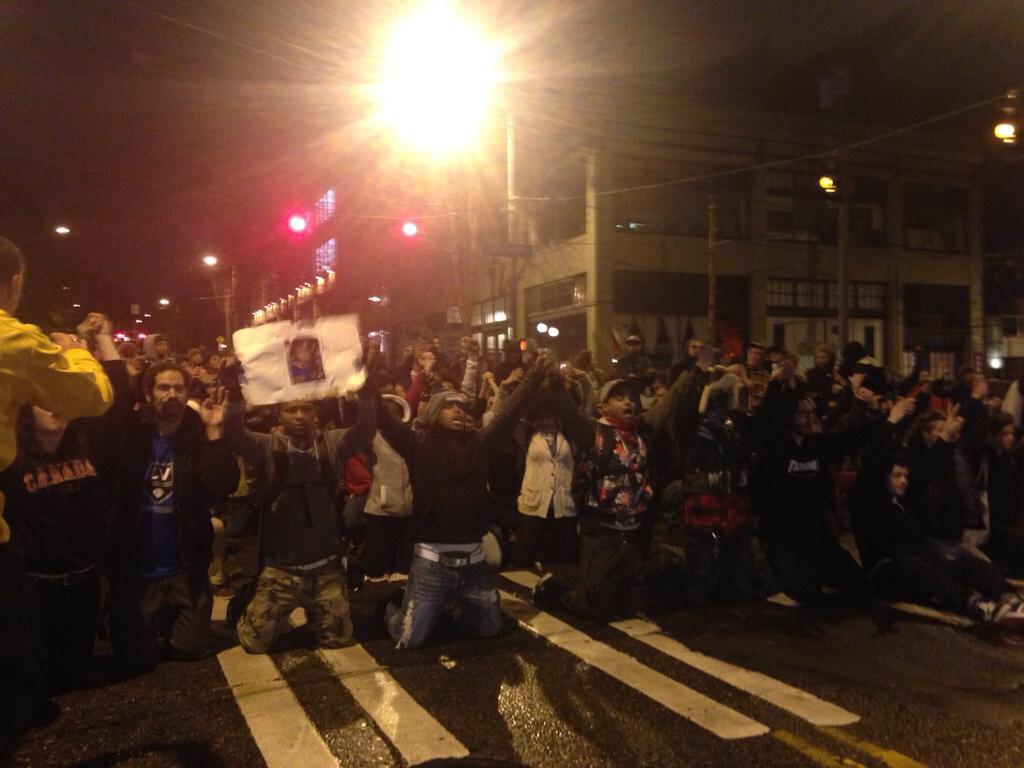
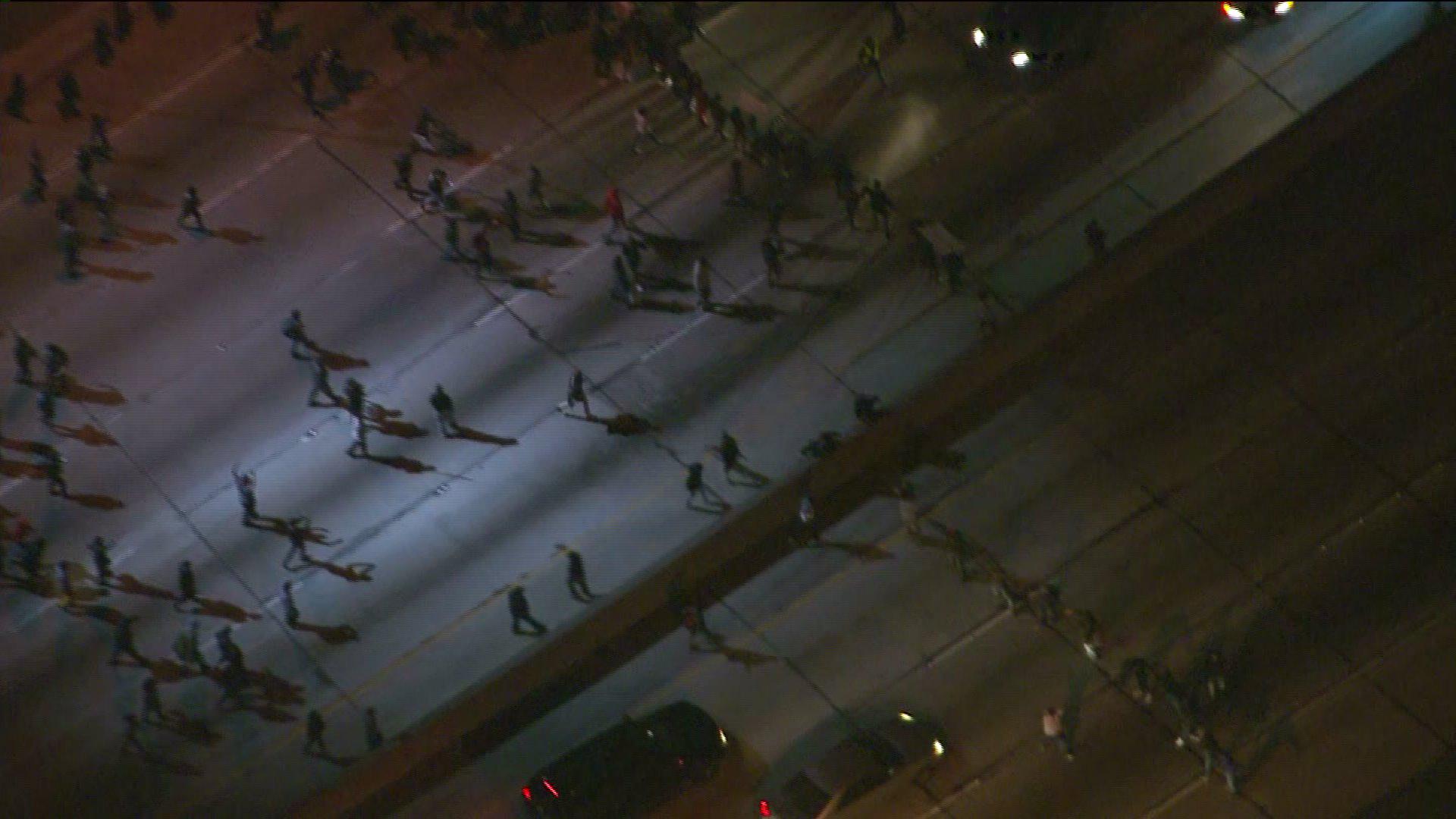
These aren’t exactly Tahrir nor Taksim Squares, large spaces at a central convergence point for all the city making for natural gathering places. Those occur in still urban places that promote gathering rather than dispersal. We’ve replaced city, and its inherent ability to foster foment just as easily as its day-to-day intended purpose of human progress through social and economic exchange, with car-dependent, isolated anti-city fragmented by these hulking concrete structures. A passive aggressive form of oppressing dissent, by disconnecting and dispersing people before they can ever get the idea that something is wrong. Of course, humanity is remarkably adaptable, using the internet as a substitute tool for organizing.
The highways are the centerless epicenter of American life. What better place to disrupt? What else better represents the very literal as well as underlying divide, displacement, and disenfranchisement, which is also why protests if and when they register on a profound cultural level, have historically been the necessary fount of upheaval when faced with variable forms of oppressive stultification?
In recent protests in London and Paris, the story was similar except physically different. It was also a story of physical dislocation leading to socio-economic isolation providing the tinderbox in need of a spark. In those european cities, it was modernist public housing isolated from the rest of the city.
In the American tale, it is the inner-city freeways, once used as a means of ‘progress’ through ‘blight removal’ (in the best light – ignoring the fact that areas of Manhattan spared the wrecking ball by anti-highway protests you can today find some of the most desirable and valuable real estate in the world) located for its cheap land (and in the worst sense as a direct means of displacement of certain segments of our community). In 345’s case in Dallas, that meant uprooting the epicenter of black culture in Texas, scattering it to the wind, in a way it would never be as cohesive, nor potent.
Oh and how it annoyed the passively attentive audience on twitter, all the more happy to announce their inhumanity in frighteningly similar declarations of how they’d ‘run them over’ or how the protesters should “go back to…”, lazily forgetting (or not paying attention) that these protests were quite multi-cultural. Luckily, the drivers on said roads showed more restraint.
My point here is not debate the specifics of the incident in Ferguson. Any one incident belies the deeper issues at hand leading to such widespread convulsion that register nationally. Instead, it is to take issue with the belief that protesters should go back to the fenced in area so we never have to hear from them again nor pay attention. “AND QUIT INTERRUPTING MY REGULARLY SCHEDULED AIRING OF AMERICAN IDOL.” That may be how you keep your peace of mind, but it’s not how change happens. Progress by its very nature requires disruption, first to our daily lives, then to your weekly episode of Dancing with the Stars, and finally to the systemic nature of the disenfranchisement.
Instead, we should follow the words of Bishop TD Jakes:
As long as interstates are allowed to cut off vital access to resources like a modern-day Berlin Wall, problems will subsist. Let’s look to cities like San Francisco that have torn down elevated freeways to create economic revitalization in the form of diverse, mixed-use, mixed-income rooftops.
And not just for the historical injustice, but to build a better, more functional, more interconnected city because our physical barriers invariably lead to less tangible social and economic ones as well. Don’t bother if you don’t feel them. Instead, defend other’s rights to expression. This is why we must remove inner-city highways that cripple the city’s ability to empower, to function as a city, and provide opportunity. but instead laden it with unbearable burdens of cost, congestion, pollution, and oppression.


